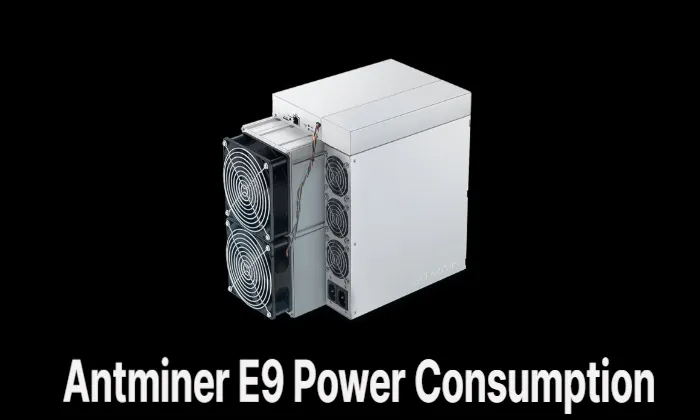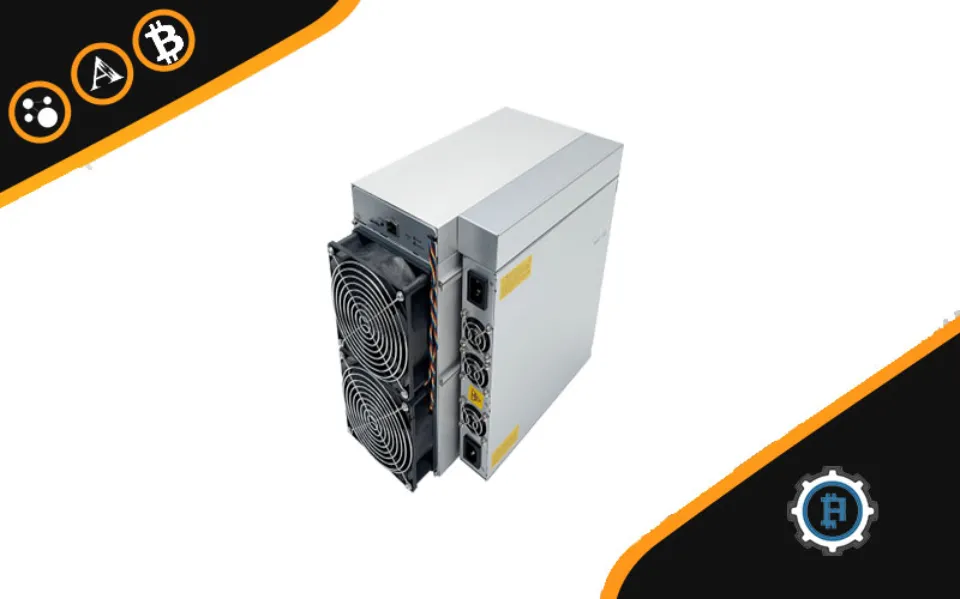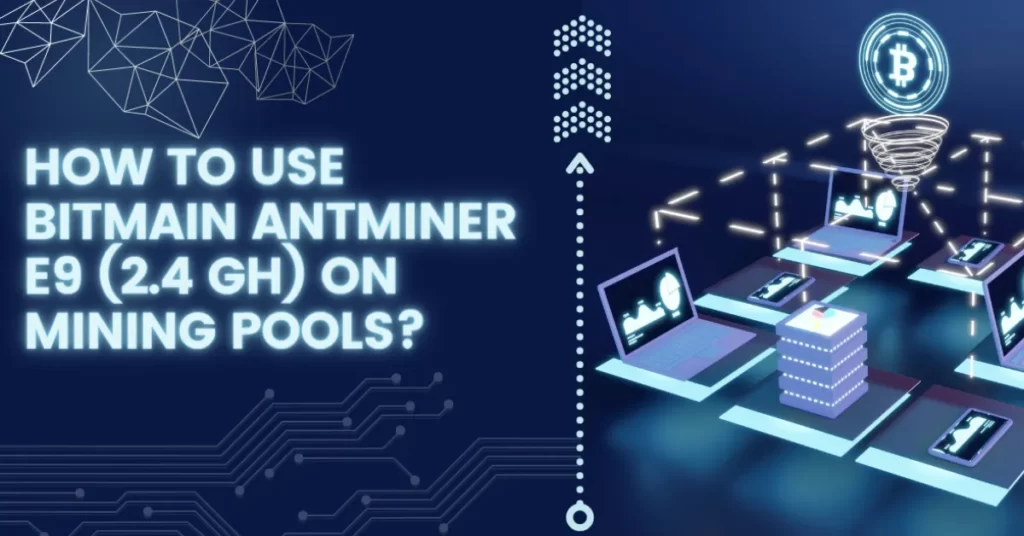You will have a clear understanding of Ethereum Classic (ETC) and how to mine Ethereum Classic with Antminer E9 in this guide.
With the popularity of Bitcoin, mining has attracted many tech enthusiasts as a viable passive income option. Early adopters benefited from mining with less sophisticated hardware and lower difficulty rates. With BTC and Ethereum, the mining rewards were both lucrative. An early adopter option is still concealed in plain sight in both situations, despite markets becoming oversaturated and difficulty levels steadily rising.
Table of Contents
What is ETC?

Technically, Ethereum Classic is the original Ethereum blockchain that didn’t experience the hardfork in 2016 as a result of the DAO attack. The Ethereum community was split over whether to keep the immutability or undo the significant damage, which led to the creation of the chain. On the unforked blockchain, now known as Ethereum Classic, a group of developers who opposed forking resumed their operations.
ETC, or Ethereum Classic, uses a proof-of-work consensus algorithm similar to that of the bitcoin blockchain, but it hasn’t yet reached the saturation point or reached a level of difficulty in ethereum classic mining that is comparable to that of the bitcoin network. As a result, it is a good option for miners looking for a mining market with a high rate of return on investment.
The setup for mining Ethereum Classic that is needed for ETC is not overly complex, making it simple to set up and capable of producing a respectable amount of revenue.
Ethereum Vs. Ethereum Classic
What distinguishes Ethereum and Ethereum Classic from one another? In terms of basic functionalities, ETC and ETH are equivalent. The open-source code, for instance, can be used by developers to create and manage their decentralized applications (dApps). Tokens based on the ERC-20 standard can be made by them as well.
Having said that, Ethereum Classic’s primary differentiating factor is its incompatibility with updates on the ETH blockchain. A hard fork is a backwards-incompatible update by definition. The new chain and its users (nodes) are totally severed from the prior chain by the application of a new set of rules. As a result, the original chain (Ethereum Classic) is unable to access any updates made to the new chain (Ethereum).
What use does ETC then have, if it can’t be updated, one might wonder? As was already stated, the Ethereum Classic was built more on an ideological basis than anything else. Its greatest relevance, or significance, so to say, lies in preserving the original and unadulterated Ethereum code. ETC acts as an unaltered historical record of the Ethereum network in this sense.
Miners Move to Ethereum Classic After the Merge
Following the merge, miners switched to Ethereum Classic, which helped bring the smaller cryptocurrency to public attention. Following the merge, the ETC hash rate, a gauge of the total power used for mining, increased by 280%, demonstrating the extent of miners’ migration to Ethereum Classic.
The staking pools managed by centralized businesses were the primary cause of this increase. With the aid of an Ethereum staking pool, multiple ETH owners can pool their tokens to gain validator status. Ethereum requires 32 ETH, roughly $44,000 at the time of this writing, to obtain a “set of validator keys.”
Prior to their merger, the U.S. Tornado Cash, a virtual currency mixer that assisted in obscuring the source and destination of funds on the Ethereum blockchain, received Treasury approval. Tornado Cash is accused by the Treasury of facilitating money laundering. This clarified the issue with Ethereum’s proof-of-stake mechanism further.
The ideological difference between Ethereum and Ethereum Classic is highlighted by this conflict. Crypto pragmatists point to Ethereum’s more flexible and malleable nature as the way to go, while crypto purists favor a libertarian, censorship-resistant, decentralized model.
Ethereum Classic Hardware Requirements
In comparison to their competitors, such as Ethereum and Bitcoin mining, the hardware requirements are quite low. ETC can be mined on GPUs and doesn’t initially call for specialized ASIC rigs. You should be able to begin mining right away if you have an NVIDIA or AMD graphics card installed in a well-built, powerful gaming desktop.
Components for computers have become incredibly expensive recently. Graphics cards are not an exception. Of course, you need a lot of computing power to mine Ethereum effectively. That’s why purchasing a powerful Ethereum miner like the Antminer E9 is a much better option than pouring all of your money into overpriced graphics cards.
It is very powerful with a rate of 3 GH/s. Let’s compare that with some graphic cards:
- RTX 3090: 125 MH/s
- RTX 3080 Ti: 118.9 MH/s
- RTX 95: 95 MH/s
It’s impossible to compare the power the Bitmain E9 offers.
Currently, the hash rate of ETC is in 84 million hashes per second, with virtually no hardware cost. Given that both ETC and Ethereum use the Ethash algorithm and that ETC has a lower difficulty cost than Ethereum, ETC is unquestionably a better target for your mining resources. The current per-block reward is 3.88 ETC, or about $45 per block that is mined. ETC is a good opportunity for cryptocurrency enthusiasts to profit from the low saturation in the ETC mining space given the setup costs and cost of $0.1 per kWh.
Mining Ethereum Classic With Antminer E9

The Ethereum and other cryptocurrencies use the Ethash mining algorithm, which is also used by ETC. Memory-hard Ethash is an algorithm that promotes decentralization and is resistant to ASICs.
High hashrate, low power, and low noise are just a few advantages of using an Antminer E9 for ETC mining. The Antminer E9 can mine a number of ETC blocks each day thanks to its 3 GH/s hashrate. Additionally, the Antminer E9 uses only 2556W of power, which makes it an energy-efficient choice for ETC mining.
However, using an Antminer E9 to mine ETC has some disadvantages as well. The Antminer E9’s expensive initial purchase price, which can be prohibitive for small-scale miners, is one of its main drawbacks. Furthermore, a number of elements, such as the price of ETC, the difficulty of the mining process, and network hashrate, can have an impact on how profitable ETC mining is.
To start mining ETC with an Antminer E9, you will need to follow these steps:
- From a reliable supplier, purchase an Antminer E9. Buy Antminer E9 >
- To store your ETC earnings, create a wallet.
- Connect your Antminer E9 to your computer or network, then configure it by entering your mining pool information.
- Start mining ETC by turning on your Antminer E9 and keeping an eye on your profits.
In general, mining ETC with an Antminer E9 can be a successful and effective way to produce cryptocurrency. You can decide on your mining operations in an informed manner if you are familiar with the advantages and disadvantages of ETC mining, the ETC mining algorithm, and how to start mining ETC with an Antminer E9.
Read more: How to Set Up Bitmain Antminer E9 to Mine Ethereum Classic (ETC): Step-by-step
Mining Ethereum Classic Solo Or in a Mining Pool?
Once you have decided what kind of hardware and software to use, you will have to choose whether to mine alone or to join a mining pool. I would like to remind you that when you mine alone, all of the profits made from the activity are yours to keep (as opposed to when you mine in a pool, where you must share them), but the profits could be lower because mining alone prevents you from achieving the computational power that you would have by joining a team.
You have a variety of options if you choose to join an ETC mining pool. Nanopool or Ethermine are two of the most well-liked options. These are platforms for novices, as they do not require technical knowledge. Selecting the cryptocurrency you want to mine is all that is required before downloading the suggested software from the Github page.
After the software has been installed, you must configure it by indicating the server location, the algorithm to be used, the operating system, and the details regarding the graphics card.
Wallet to Store Ethereum Classic
You’ll need a wallet to keep your earned ETC tokens once your mining activity has begun.
Here are some choices to help you select the ideal wallet for your rewards.
Atomic wallet or Exodus are both good options if you prefer a software wallet.
Instead, a Ledger Nano series wallet is the best choice if you prefer a hardware wallet.
Software Requirements and Installation
Having a secure wallet that supports ETC and is distinct from an ETH wallet is a must before doing anything else. You can choose a hardware wallet like one from the Ledger Nano series or a software wallet like Atomic wallet or Exodus as good examples.
You must choose your mining strategy after selecting the wallet functionality. You have the option of mining alone or using mining pools. The advantage of the latter is that the rewards are higher in relation to the computational power invested, making it a more attractive option for miners to choose.
For Ethereum Classic, there are many different options for mining pools, with Nanopool and Ethermine serving as two notable examples. Both of these mining platforms provide a straightforward quickstart option that walks you through selecting the specific cryptocurrency to mine—in this case, Ethereum Classic—and then directing you to a Github page to download the necessary mining software.
After choosing ETC in Nanopool, you are provided with instructions to follow and the most recent statistics regarding the pool’s hashrate, the pool’s participating miners, and the range of payouts to the miners.
Following your choice and installation, you will be required to enter data, including information about your operating system, graphics card, and server location. Enter that, follow the on-screen directions, and launch the installation process.
Ethermine, on the other hand, gives you the option of selecting a mining region and then provides the following mining software for Windows that supports both NVIDIA and AMD graphics cards.
The Claymore’s Dual Ethereum Miner, which provides the ability to mine two cryptocurrencies simultaneously, is an intriguing example of the mining software that is currently available. As a result, you can choose to mine SIA coins, such as a decentralized cloud storage token, in addition to mining ETC at no extra cost. This dual mining
Is Mining Ethereum Classic Profitable?
A useful dashboard for Ethereum Classic’s mining activities is available on CryptoCompare, a comparison website for statistics on cryptocurrencies and tokens. This dashboard provides useful information for prospective miners. There is currently an 181% profit to cost ratio, with a monthly profit rate of $157 and an estimated cost of $86 for power. For mining enthusiasts, choosing between low costs and high returns is undoubtedly simple.
Conclusion: Ethereum Classic Mining
You are prepared to begin mining as soon as you have finished installing your hardware, following the setup instructions on any of the aforementioned mining pools, and finished the installation process. To get started, follow the instructions for running commands on setx and initializing your GPUs, depending on the mining application you select. Once everything is set up and running, you will be able to see your hashrate as well.
So that’s how you begin mining a cryptocurrency in the cryptocurrency realms that is currently undervalued but undeniably undermined. Try it out and let us know what you think in the comments section below about the mining process.
FAQs
Is Ethereum Classic Better Than Ethereum?
On the Ethereum platform, previous transactions can be changed and improved. The original Ethereum system, which promoted immutability—the ability for users to not change previous transactions—was used by Ethereum Classic. Proof-of-work is the mining method used by Ethereum Classic.
Does Ethereum Classic Have a Future?
For Ethereum Classic, the price forecast above undoubtedly indicates strong growth potential. If it is accurate, between the end of this year and the end of 2025, the value of ETC could increase by roughly 512%. Then, between 2025 and 2030, it might rise once more by roughly an additional 529%.
Can Ethereum Classic Reach $1000?
Do You Think Ethereum Classic (ETC) Will Reach $1,000? Yes, Ethereum Classic will reach $1,000. By 2030, this astounding height is anticipated.
Is It Too Late to Invest in Ethereum Classic?
No. It’s not too late to invest Ethereum. Considering the ongoing network innovation, the crypto asset still has a lot of room for expansion. Particularly since The Merge, Ethereum has continued to lead the blockchain revolution.



